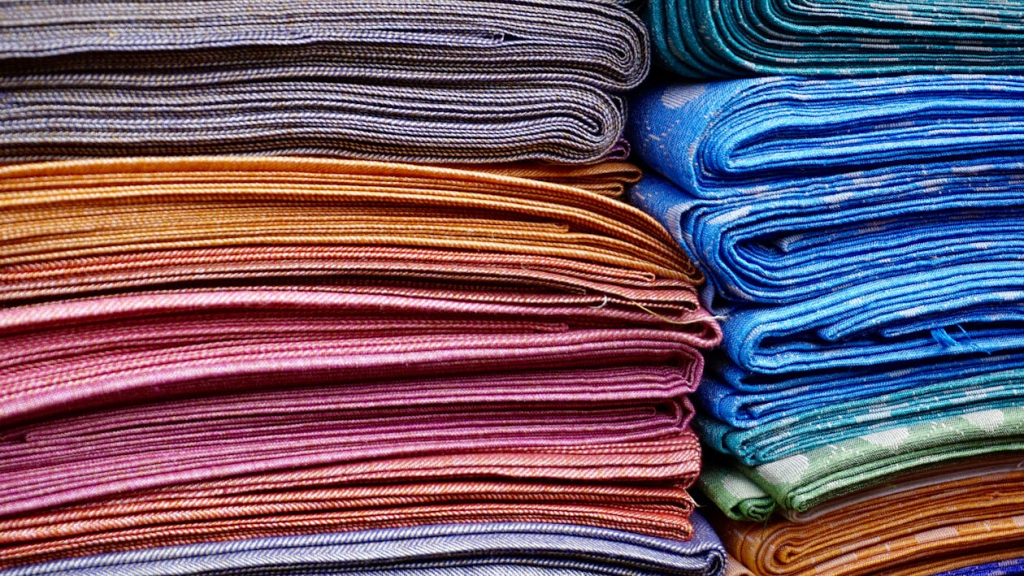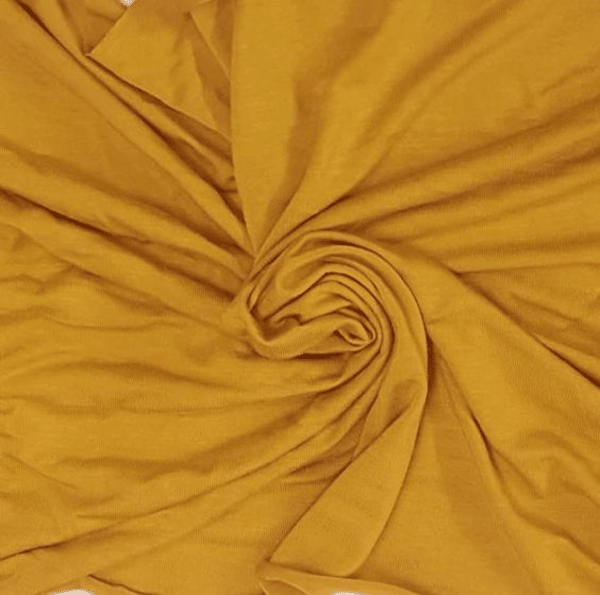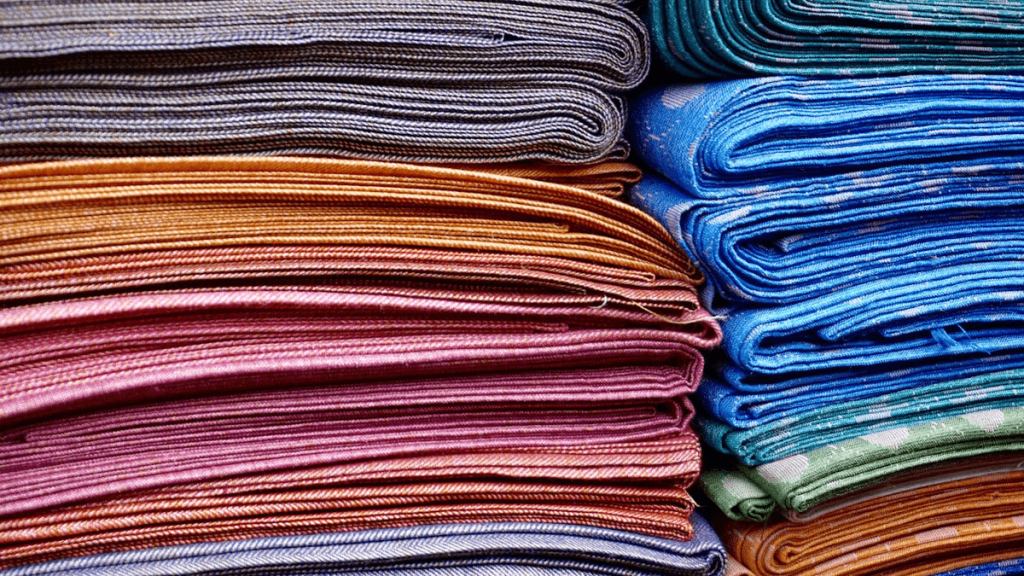Inside the realm of extravagant and comfortable fabrics, silk vs bamboo fabric stands apart as the predominant option. Both renowned for their cosy comfort, breathability, and wonderful wrap, silk and bamboo offer undeniable characteristics that solicitation to different lifestyles.
In this thorough comparison blog, we’ll jump into the qualities, advantages, and examinations of silk and bamboo fabrics to help you settle on a good choice in view of your requirements and lifestyle.

It is habitually suggested as the “leader of fabrics,” has been valued for a really long time for its extravagant feel and trademark shine. Still up in the air from the cases of silkworms, silk surface is known for its magnificent cosy quality, smooth surface, and rich wrap. Here is a low-down examination of silk fabric qualities and advantages:
Silk fabric boasts unrivaled comfort that is unparalleled by different materials. Its smooth, plush surface drifts effectively against the skin, which is both encouraging and liberal to publicize a luxurious vibe.
One of silk’s most unquestionable features is its trademark gloss, which gives a gleaming, splendid quality to the surface. This basic shimmer gives silk garments a rich and high-level appearance, making them ideal for uncommon occasions and formal wear.
Disregarding its rich appearance, the silk fabric is amazingly breathable, allowing talk about to circle energetically and control the internal heat level. This breathability ensures that silk garments stay cool and comfortable, in warm environments, making them an adaptable decision for all-year wear.
Silk is really hypoallergenic, making it an astonishing decision for individuals with tricky skin or responsive qualities. Its smooth surface and the need for irritating synthetic compounds limit the opportunity for skin disturbance, ensuring a happy wearing contribution for all.
Silk fabric has outstanding warm directing properties, keeping the body warm in chilly environments and cool in sweltering environments. This adaptability to changing temperatures makes silk garments adaptable and comfortable for various environments and seasons.
Though silk is prominent for its sensitivity and delicacy, it is a serious area of strength for incredibly honestly focused on. Great silk garments can last for quite a while with genuine upkeep, making them a gainful endeavor forever-enduring style and luxury.
One of the principal treasured characteristics of bamboo clothing is its trademark fragile quality. Bamboo strands, basically smooth and round, coast against the skin with a delicate touch that can ease to be sure the premier sensitive skin sorts.
This fragile quality is natural to the bamboo fiber itself, implying that it doesn’t diminish with washing, as is routinely the situation with different surfaces which will expect conditioners to protect their vibe.
The outcome might be a surface that feels like a second skin, promoting encouragement and simplicity of improvement without disturbance. This makes bamboo clothing particularly proper for children, individuals with skin irritation or dermatitis, and anyone searching for super in step-by-step comfort.
The normal antibacterial and smell-safe properties of bamboo clothing are a basic benefit, especially in powerful and lifestyle wear. Bamboo has an extraordinary bio-specialist known as “bamboo kun,” which quells the improvement of infinitesimal creatures on the surface.
This infers that bamboo clothing is less inclined to make obnoxious scents, for sure after deferred wear or in the midst of actual activity. The antibacterial quality additionally adds to the by and large neatness and newness of the garment, decreasing the expectation for visit washing and in this manner growing the existence of the surface.
For individuals who focus on tidiness and smell control in their dress decisions, bamboo offers a really convincing plan.
The normal antibacterial and smell-safe properties of bamboo clothing are a basic benefit, especially in powerful and lifestyle wear. Bamboo has an extraordinary bio-specialist known as “bamboo kun,” which quells the improvement of infinitesimal creatures on the surface.
This infers that bamboo clothing is less inclined to make obnoxious scents, for sure after deferred wear or in the midst of actual activity. The antibacterial quality additionally adds to the by and large neatness and newness of the garment, decreasing the expectation for visit washing and in this manner growing the existence of the surface.
For individuals who focus on tidiness and smell control in their dress decisions, bamboo offers a really convincing plan.
At the finish of its lifecycle, bamboo clothing biodegrades regularly, getting back to the Dirt without getting out behind damaging poisons or developments. This biodegradability ensures that bamboo clothing doesn’t add to landfill waste, not the slightest bit like various designed surfaces that can require some investment to separate.
By picking biodegradable bamboo clothing, you’re diminishing your regular impression and propelling a more viable way to deal with shape. Whether treated the soil or got out to separate in trademark circumstances, bamboo surface re-visitations of the dirt as normal matter, going full circle of acceptability.

Despite its sensitivity and lightweight feel, bamboo clothing is incredibly strong and enduring. Bamboo fibers are basically strong and adaptable, facing pilling, expanding, and tearing predominant than various other typical fibers.
This strength ensures that bamboo clothing keeps up its shape and insight to be sure after reiterated wear and washing, making it a quick theory for your storeroom.
Whether you’re wearing bamboo clothing for standard activities or outside endeavors, you’ll rely upon its strength to oppose the afflictions of regular day-to-day existence and remain looking unbelievable from now into the indefinite future.
Bamboo clothing warm directing properties are truly groundbreaking, allowing for all-year comfort in various environmental conditions. The strands regularly change to internal heat level, giving warmth in cooler circumstances and cooling easing when temperatures climb.
This adaptability is because of the miniature holes and miniature openings in bamboo fibers, which stretch out or contract in response to temperature changes, making an individual microclimate of relief.
This is precious for individuals who experience fluctuations in internal heat level or for those changing between particular circumstances generally as the day progresses. It ensures that whether you’re inside or outside, dynamic or very still, bamboo clothing has an effect to keep up a comfortable internal heat level.
Silk and bamboo surfaces are both celebrated for their softness, comfort, and lavish feel. In any case, they are specific in their origin, age structures, and attributes. Understanding the differences among silk vs bamboo fabrics can help you to make wise decisions in view of acceptability, care,sustainability, and use.
Silk could be a trademark protein fiber gotten from the casings of the mulberry silkworm. Its age is work concentrated and incorporates sericulture (silk developing), cocoon harvesting, and fiber extraction. Silk creation process is old and calls for vital investment and care, especially inside the delicate design of relaxing the silkworm cases to convey the silk string.
Bamboo still up in the air from the crush of bamboo grass. The strategy for transforming bamboo into fabric can change, however it usually incorporates separating the bamboo into a pound and after that recuperating the fibers to be turned into yarn.
There are two key kinds of bamboo surface: bamboo thick (or rayon), which incorporates a compound plan to separate the pound, and mechanical bamboo, which is more uncommon and all the more normally welcoming yet delivers a surface more similar to material.
Silk is renowned for its smooth, fragile surface and sumptuous gloss. It wraps wonderfully and feels phenomenally light and cosy against the skin. Silk’s ordinary protein structure makes it incredibly delicate, ideal for sensitive skin.
Bamboo surface is known for its soft quality and delicate surface, much of the time contrasted with cashmere or silk. It’s incredibly breathable, dampness wicking, and has the ability to control temperature well, making it comfortable for the entire day wear and for people with sensitive skin.

Silk requires wary upkeep to safeguard its surface and shine. It’s generally proposed to hand wash or launder silk garments to keep them putting their best self forward. Silk is moreover powerless to hurt from sunlight and sweat.
Bamboo surface is conventionally more strong and less difficult to really focus on than silk. It can every now and again be machine washed and is more protected to kinks and shrinkage. Anyway, the texture’s life expectancy can change in view of the weave and the nature of the bamboo texture.
Because of its work concentrated age plan, silk is routinely more expensive than bamboo and various different surfaces. The caused significant damage mirrors the quality, feel, and robustness of the texture.
Bamboo surface is generally less expensive than silk. The got can move in view of the age system, with precisely conveyed bamboo surface normally being more excessive than its artificially conveyed accomplice. Contact us to check our reasonable quotes today!
Silk’s luxurious feel and appearance make it a number one for top of the line shape, clothing, formal wear, and select sheet material.
Bamboo texture’s relief, strength, and hypoallergenic properties make it appropriate for normal wear, sports clothing, towels, and bedding, especially for those with tricky skin or awarenesses.
Both silk and bamboo fabric offer fascinating focal points with regards to terms of comfort, practicality, and in vogue demand. Your decision between the two could rely upon factors like normal effect, care essentials, financial plan, and individual tendency for surface and use. Silk offers unequaled luxury and a delicate touch for sensitive skin, though bamboo gives a doable, adaptable, and simple consideration elective for a wide run of vocations.
Silk overall takes the crown for unmatched softness, with a smooth, almost slippery feel against the skin. Bamboo, regardless, offers extraordinary comfortable quality too, bragging a smooth and luxurious surface.
Is silk or bamboo way better for fragile skin? A: The two fabrics can be suitable for sensitive skin due to their hypoallergenic properties. Regardless, a couple of individuals could find the delicate idea of silk to some degree scraping
Bamboo surpasses assumptions in breathability much appreciated to microscopic openings inside its strands, propelling breeze stream and keeping you cool. Though silk is breathable, it doesn’t exceptionally facilitate bamboo’s execution.
This relies upon the both creation systems. Normal silk developing reduces regular effect, though bamboo arranged using the Lyocell system is more viable. Investigate for certificates like Oeko-Tex Standard 100 for trustworthy sharpens.
Silk can be delicate and leaned to tangles or tears. Bamboo, then again, can be incredibly strong, especially when made with great strands. Nevertheless, a couple of bamboo dress likely could be more defenseless against losing shape over the long run.